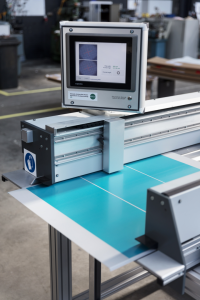
Using litho as a tool to simplify prepress in flexible packaging
July 10, 2019Flexible packaging markets are growing strongly across the world, with more brands and retailers choosing the light weight and convenience of the wide variety of packs available, from sachets, lids, bags, tubes and pouches. This is good news for converters as print volumes grow, but there are impacts on any business, with increasing administration and prepress needed to handle more jobs.
The printing buzzword of the late 20-teen years is Workflow. It’s a great word for the print techies because it represents a broad range of activities, without actually being anything specific. In reality it covers all the activities necessary to deliver a printed job. There will be concept and structural design, material selection, production costing and timings as well as graphics – not to mention filling and delivery of the product into retail distribution. Most workflow is digital, with management information systems at converters being used to handle increasing numbers of jobs without adding to administration staff numbers. Workflow doesn’t necessarily finish when digital artwork moves into the analogue flexible packaging world. Plates and production can be tracked, while stocks of reels and packs can be monitored right into the filling line. Connected customer ERP systems can link with the MIS at a converter, with increasingly these linked into the prepress workflow, stock management and postprint warehousing to provide accurate and real time information automatically.
Growing number of jobs, design trends and changing legislation
Workflow is increasingly important as run lengths fall because the number of jobs, including orders with multiple varieties and versions, is growing inexorably. This increases the load on prepress/design departments, and on customer service personnel in administration roles. It is not always easy to recoup the costs incurred here, while other trends are coming together in 2019 that further increase the pressure on flexo printing companies.
One of the design trends in packaging in 2018-19 is moving away from heavy, solid coverage toward more white space with high quality continuous tone images. Many flexo designs feature areas of heavy solid coverage, linework and text that appears dated against many fresh modern designs. HD flexo and gravure can deliver the required quality, but much of the flexo capacity will struggle to deliver the desired quality, needing extended make-readies and running waste. Legislation means brands may have to change the text on packs, as has happened with nutritional information and potential allergen contamination. This means new plates, sometimes just a black text change but brands increasingly are using promotional campaigns with additional features, as well as the regular pack refreshes meaning a total new set of plates may be required.
At the same time the demand on speed to market is growing with pressure to reduce inventory, meaning more companies will be interested in taking prepress inside the company, and as litho prepress is much simpler there is an advantage for litho. More companies are looking at taking platemaking in-house, often in combination with design, to improve response rates as well as taking a greater share of the value of the job. The flexo computer-to-plate manufacturers have simplified their machinery, with automatic plate handling, imaging, processing and cutting combined into a total system.
Flexo plates are quite expensive, and time consuming to make even if they are produced in-house. Back exposure, imaging, processing and drying will take a few hours then cutting to size and mounting in precision register adds further time. After printing plates will be cleaned and stored for re-use. For flexible packaging web offset litho offers an interesting alternative to flexo, and the early adopters are using their prepress capability as a source of significant competitive advantage.
Litho platemaking is simple and relatively inexpensive
In comparison to flexo, litho platemaking is simple. It uses a pre-sensitised coated aluminium plate that can be imaged and processed in a few minutes on a relatively inexpensive computer-to-plate system, with plates bent for mounting on sleeves within a few minutes.
Plate and blanket sleeves are changed rapidly, while the press adjusts the inking and dampening solution for the new job in a few minutes, quickly and accurately, then moving into print mode with minimal set-up waste. Of course, many flexo houses are adept at minimising changeovers, but with process colour litho printing to standard colours matching the proof is now part of the press operation and much more time is available for actual printing on a litho press.
Simplifying prepress in-house offers users several advantages
Sleeve mounting station
Simplifying prepress in-house offers users several advantages. The cost of plates is much lower than the flexo alternatives, providing profit opportunities while using fresh plates each time a job is printed allows greater flexibility in design, delivering sharp, crisp text and linework with very high quality imaging. Speed to market will be improved, particularly when plates come from an external provider. The overall production process can be simplified through the use of controlled litho process printing to accepted standards, ensuring consistent results that meet the most exacting customer expectations.
Simplifying the processes involved is a critical component for success, the good news for companies choosing to use litho printing in flexible packaging is that prepress is easier to handle in-house as part of a slick digital workflow process that helps handle many more jobs efficiently.
